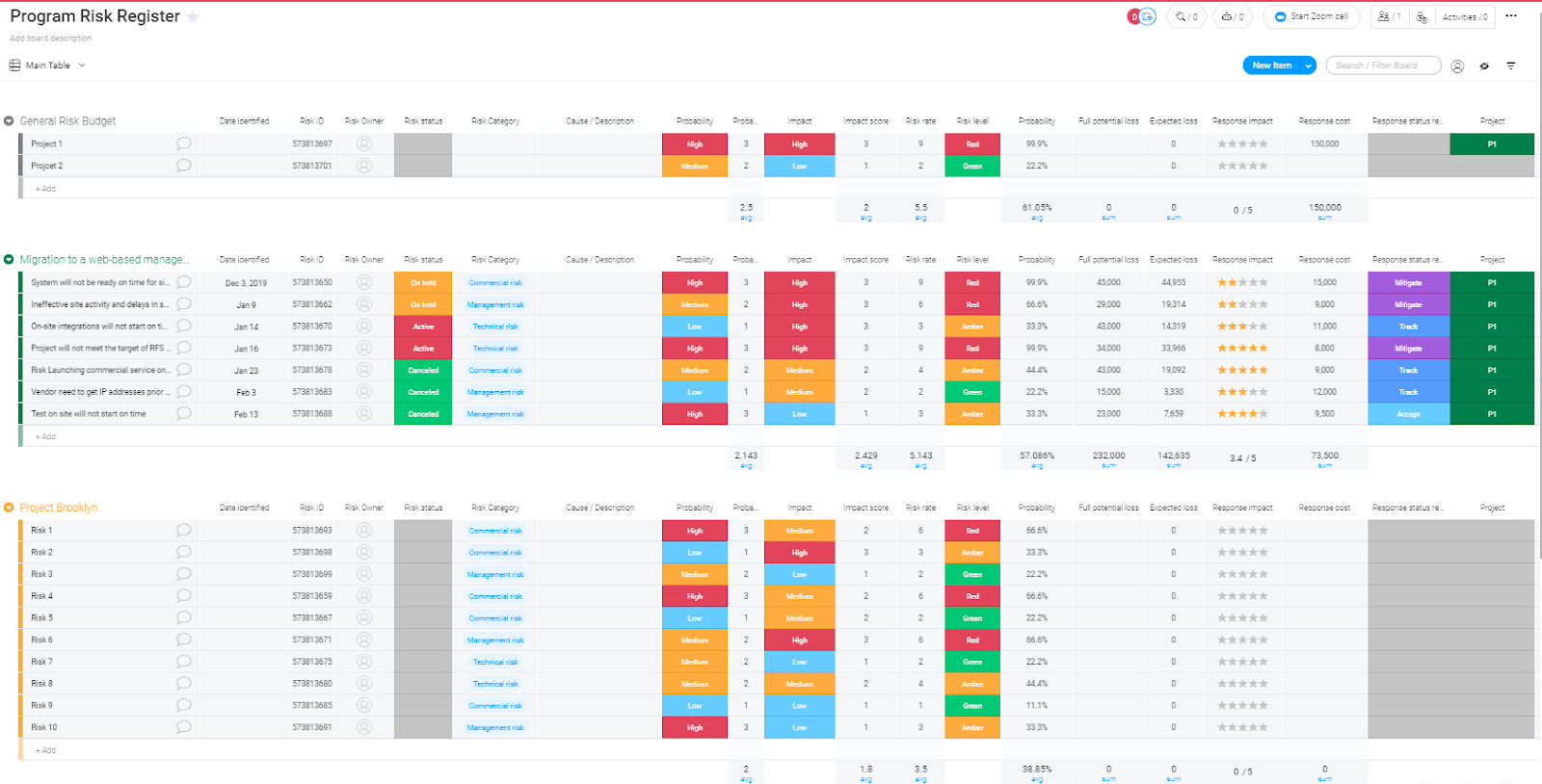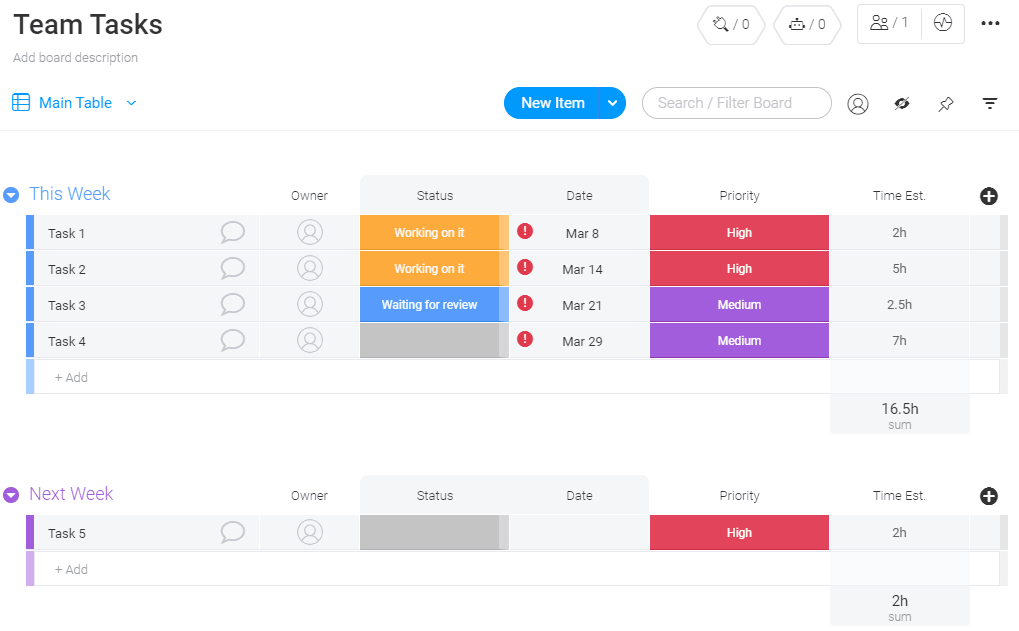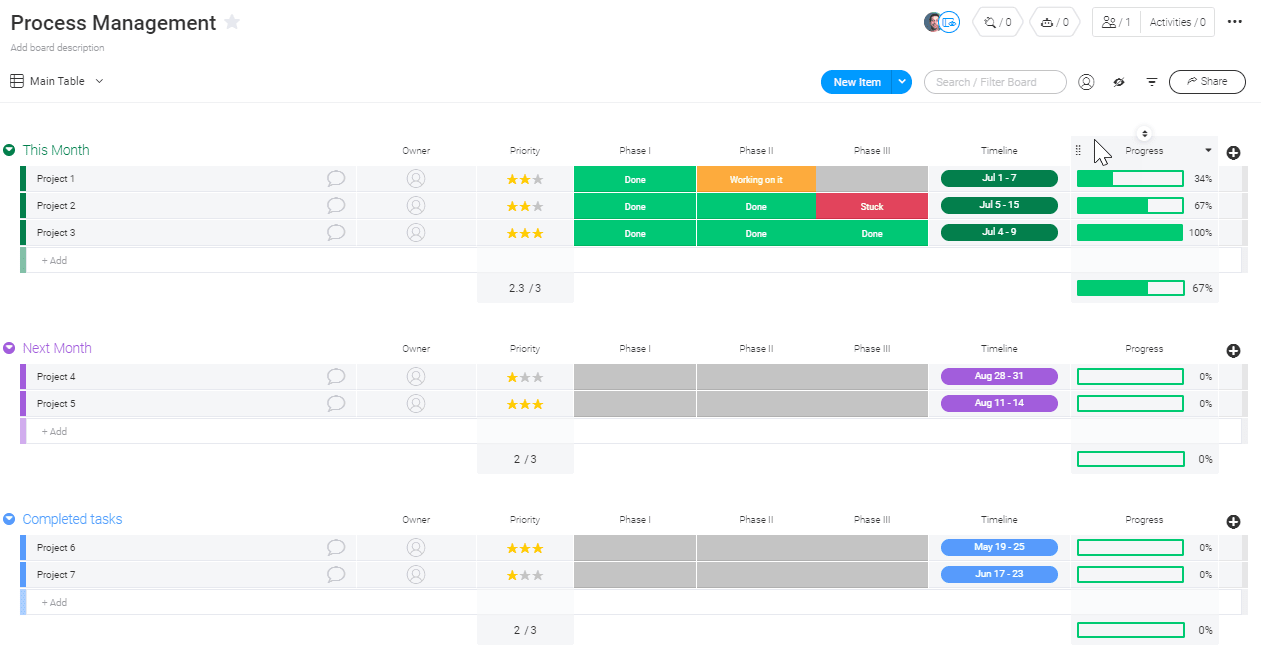In some of our other posts on the monday.com blog, we’ve discussed the idea of crisis management.
Viewed a certain way, a crisis is really just a time of rapid change.
What if a company were to have a “crisis” on purpose?
Suppose they knew their infrastructure was outdated, and in need of a radical update?
It wouldn’t be easy. Without careful management, a controlled crisis like that could easily spiral into a regular crisis.
But there’s a way to ensure that big changes don’t derail your entire organization.
It’s called change control management — and the monday.com Work OS can help you pull it off.
This article will explain what change control management is, how it works, and how you can benefit.
What is change control management?
Change control means that you pre-emptively establish processes to make any changes to your project, infrastructure, or organization.
Before we keep going, let’s sort out a point of frequent confusion: change control and change management are not the same thing.
Change management is the act of dealing with changes outside of your control. A change manager might be hired to guide an organization through a time of upheaval in the industry or the world.
Change management can also refer to how companies find a new normal after a major internal change.
Change control is different.
Change control means understanding that changes can have unexpected effects — and planning for them. A change control process is neither vague nor broad. In fact, it only works if it gets as specific as possible.Let’s use an example to define change control in detail. Suppose you’re working on a SaaS platform that helps small business owners order inventory.
Your work is mainly in e-commerce but, one day, a new order comes in from the head of product: instead of just being a store, they want users to be able to bank money in the product as well.
The product head doesn’t work on your team, so your project manager is the first to learn about the proposed change. The product head recognizes that this will be a major scope change, but says it comes from user research.
Without a project change control process, your project manager has 2 options here.
1. They can refuse to make the change, causing a rift within the company and potentially missing out on customers who asked for the new features,
OR
2. They can accept the change and ask you to start work on it immediately, at the risk of throwing the whole development schedule into confusion.
As you can see, neither option is great. But there’s a third choice.
3. They can run the project change through a thorough change control system and decide how to implement it in a way that minimizes impact and maximizes return.
In the bad scenario, say your team lead picks #2. You’re suddenly thrust into a project with a scope that doesn’t match what you’ve been working toward for months.
You make changes without understanding the consequences and, soon, you can’t get the product back to where it was when you started.
In the best scenario, where a change control process exists, any potential consequences will have been mapped out and understood ahead of time. If a change needs to be reversed later, there’s a clear path back to the starting point.
So how do you get that process in place?
By following the steps in the next section.
How do you manage the change control process?
A good change control process needs to flow through several phases.

This screenshot demonstrates what a change control management tracker can look like (yes, it’s ours — that’s the change management use case for the monday.com Work OS).
As you can see, it’s a lot like how any other task gets moved through the implementation process.
First, someone submits an official change request form. As a minimum, this should define the change, the reason for the change, and how long they expect it to take.
Next, somebody needs to review the change request and make a decision about whether, when, and how to implement it. This is the critical point: at a minimum, the change request review needs to include the four elements below.
1. Risk assessment
In your company’s system, everything is connected. So any major change carries some risk.
However, failing to act on opportunities for positive change bears risks of its own.
That’s why any change control process must involve a risk analysis. Following standard risk management procedures, weigh the risks and rewards of making the change vs. the risks and rewards of doing nothing.
The monday.com program risk register template is our favorite example (I mean, we did invent it).

Since no two organizations face quite the same sorts of risk, we made it so you can customize this table by adding new columns.
By keeping track of risk, you can evaluate each change to see whether it’s better to press forward or play it safe for now.
2. Backout plan
Risk analysis is important, but you’ll never be able to foresee everything that could go wrong.
It’s rare, but possible, that you’ll commit to a change that’s too great for your project to bear.
In our example, turning your e-commerce app into a banking platform might mean you’ll make it to market too late.
In that case, you’ll have to activate your backout plan, and get back to basics so you can ship faster.
A backout plan means that you never embark on a change without understanding how you could return to the pre-change state on short notice.

Tracking your changes closely with a change management template (like the one above from monday.com) makes detailed backout plans a breeze.
3. Defined staff roles
Remember how, at the beginning of this post, we defined changes as controlled crises?
In a crisis situation, nothing is more important than clearly laying out jobs for every member of your team.
The same is true for change control. It’s all part of building a uniform process for rigorously vetting every change.
You’ll need to designate at least the following people (these can overlap):
- Someone to read change requests
- Someone to conduct risk analysis
- Someone to communicate with outside stakeholders
- Someone responsible for final approval

Use the monday.com team task management template to keep all of them straight.
4. Documentation
The change you’re dealing with at the moment is very unlikely to be the last one.
Changes will come in the future, and they might need to build on what happened during prior periods of change. That requires in-depth knowledge (particularly if something went wrong).
In change control, document everything. Every initial change request should be submitted in a standardized document format. Same with risk evaluations, approvals, denials, and requests for further information.
On top of that, the entire change log should be made available to every stakeholder both during, and after, the change control process.
You guessed it: there’s a monday.com template for that.

Our process management template lets you share links to documentation for every stage of the change control pipeline. Even people outside your company will find it easy to get what they need.
How does monday.com help with change control?
monday.com is a Work OS.
Through user-friendly templates and integrations, it helps make your workflows…y’know, work.
What does that mean for change control?
As you’ve seen above, a comprehensive change control plan has a lot of moving parts.
You need to evaluate several options in-depth, calculate forecasts for the future, and stay in communication with everyone the whole time.
It’s going to go far better if you have all your apps working together, and all your important information visible in one place. That’s where change control software can help.
Change control helps you plan change, not panic
Change control is just a fancy word for making sure change is intentional, rather than forced on your project team and company from the outside.
It’s about active change, since that almost always works out better than reactive change.
Nobody knows better than you what kind of challenges you’re likely to face over the lifetime of your project.
We figure the best thing we can do for you is open up the monday.com templates library, so you can start building your perfect change control plan.
Thanks for reading, and never forget to embrace change!

